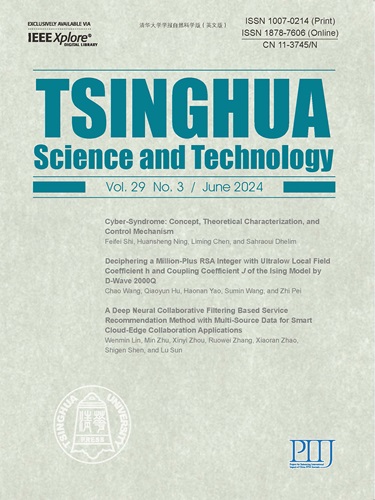利用混合级联注意结构的深度特征诊断早期阿尔茨海默病(AD)严重程度的新分类方案:在MRI扫描上早期发现AD
IF 3.5
1区 计算机科学
Q1 Multidisciplinary
引用次数: 0
摘要
在阿尔茨海默病(AD)等神经病理疾病中,神经成像和磁共振成像(MRI)通过利用边缘智能资源,在医疗物联网人工智能(AIoMT)领域发挥着至关重要的作用。然而,基于神经退行性疾病的MRI扫描的准确分类面临着挑战,这是由于不同类别之间的显著差异和有限的类别内差异。为了解决这一挑战,我们提出了一种新的方法,旨在通过MRI成像提高对AD的早期检测。该方法将卷积神经网络(CNN)与级联注意模型(CAM-CNN)相结合。CAM-CNN模型在AD分类精度和处理复杂度方面优于传统cnn。在该体系结构中,通过使用两个约束代价函数和具有不同预训练参数的跨网络,有效地实现了两流体系结构的注意力机制。此外,引入了两个新的成本函数,满意秩损失(SRL)和跨网络相似性损失(CNSL),以增强协作和整体网络性能。最后,在注意力模块中采用独特的熵加方法进行网络集成,将中间结果转化为最终预测。这些组件被设计为协同工作,可以依次训练以获得最佳性能,从而提高AD阶段分类的有效性和对MR图像干扰的鲁棒性。使用Kaggle数据集的验证表明,该模型在多类别分类中的准确率为99.07%,确保了所有AD亚型的精确分类和早期发现。在三个不同数量的特征类别中进一步验证了所提出方法的鲁棒性,与标准标准的偏差小于1%。应用于阿尔茨海默病患者护理,这种能力有望提高基于价值的治疗和临床决策。它有助于将阿尔茨海默病患者与健康人区分开来,从而改善患者护理并实现更有针对性的治疗。本文章由计算机程序翻译,如有差异,请以英文原文为准。
Novel Classification Scheme for Early Alzheimer's Disease (AD) Severity Diagnosis Using Deep Features of the Hybrid Cascade Attention Architecture: Early Detection of AD on MRI Scans
In neuropathological diseases such as Alzheimer's Disease (AD), neuroimaging and Magnetic Resonance Imaging (MRI) play crucial roles in the realm of Artificial Intelligence of Medical Things (AIoMT) by leveraging edge intelligence resources. However, accurately classifying MRI scans based on neurodegenerative diseases faces challenges due to significant variability across classes and limited intra-class differences. To address this challenge, we propose a novel approach aimed at improving the early detection of AD through MRI imaging. This method integrates a Convolutional Neural Network (CNN) with a Cascade Attention Model (CAM-CNN). The CAM-CNN model outperforms traditional CNNs in AD classification accuracy and processing complexity. In this architecture, the attention mechanism is effectively implemented by utilizing two constraint cost functions and a cross-network with diverse pre-trained parameters for a two-stream architecture. Additionally, two new cost functions, Satisfied Rank Loss (SRL) and Cross-Network Similarity Loss (CNSL), are introduced to enhance collaboration and overall network performance. Finally, a unique entropy addition method is employed in the attention module for network integration, converting intermediate outcomes into the final prediction. These components are designed to work collaboratively and can be sequentially trained for optimal performance, thereby enhancing the effectiveness of AD stage classification and robustness to interference from MR images. Validation using the Kaggle dataset demonstrates the model's accuracy of 99.07% in multiclass classification, ensuring precise classification and early detection of all AD subtypes. Further validation across three feature categories with varying numbers confirms the robustness of the proposed approach, with deviations from the standard criteria of less than 1%. Applied in Alzheimer's patient care, this capability holds promise for enhancing value-based therapy and clinical decision-making. It aids in differentiating Alzheimer's patients from healthy individuals, thereby improving patient care and enabling more targeted therapies.
求助全文
通过发布文献求助,成功后即可免费获取论文全文。
去求助
来源期刊

Tsinghua Science and Technology
COMPUTER SCIENCE, INFORMATION SYSTEMSCOMPU-COMPUTER SCIENCE, SOFTWARE ENGINEERING
CiteScore
10.20
自引率
10.60%
发文量
2340
期刊介绍:
Tsinghua Science and Technology (Tsinghua Sci Technol) started publication in 1996. It is an international academic journal sponsored by Tsinghua University and is published bimonthly. This journal aims at presenting the up-to-date scientific achievements in computer science, electronic engineering, and other IT fields. Contributions all over the world are welcome.
 求助内容:
求助内容: 应助结果提醒方式:
应助结果提醒方式:


